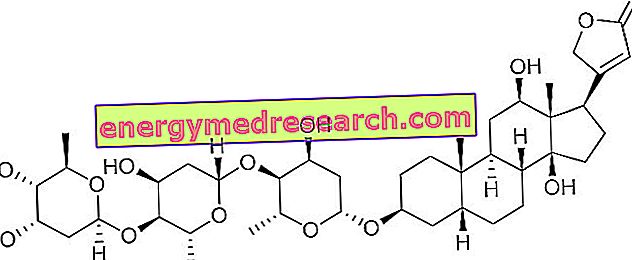Generality
Tinea versicolor (or pityriasis versicolor) is a fungal infection that affects the skin surface.

Tinea versicolor is often associated with increased sebum and sweat production. This skin infection is favored by the combination of hot-humidity, ineffective personal hygiene and secondary immunosuppression due to certain drug therapies, malnutrition, diabetes and other systemic diseases.
The tinea versicolor manifests itself with the appearance of small flat and discolored spots, often well demarcated. The lesions preferably appear on the upper part of the body (neck and back) and can flow together into a larger patch.
Generally, tinea versicolor does not cause other symptoms; only in some cases, the rash can cause mild itching and flaking .
The diagnosis is based on the clinical aspect of the lesions and on the examination of cutaneous scarifications under the microscope.
The treatment of tinea versicolor involves the use of antifungal drugs to be applied locally to the skin (in the presence of a localized infection) or to be taken orally (in the case of extensive disease or frequent relapses).
Pityriasis versicolor is generally chronic and persistent; therefore, the doctor may also prescribe an adequate therapeutic regimen to prevent recurrences. To this end, it is important to observe an accurate personal hygiene, choose natural fabrics (not synthetic) and wash clothes at high temperature (at least 60 ° C).
Note
The mycosis takes the name of tinea versicolor, that is multicolored, since it manifests itself characteristically with spots and patches of various shades, hypopigmented or hyperpigmented (that is, lighter or darker in color than the surrounding healthy skin).
Tinea versicolor is also called "beach mushroom", as the condition is more evident during the summer months.
Causes
Tinea versicolor is a fairly common skin infection caused by the proliferation of fungi of the genus Malassezia . These yeasts can be found as a component of the normal skin flora of most healthy adults. In particular, the fungi of the genus Malassezia are found in the stratum corneum and in the hair follicle, especially at the level of areas rich in sebaceous glands, such as the face, scalp and upper part of the trunk.
The species most commonly involved in this type of mycosis are Malassezia furfur and M. globosa. These microorganisms are usually harmless, however, when certain conditions favorable to their proliferation are established, they can behave like opportunistic pathogens and cause problems.
Most cases of tinea versicolor occur in healthy subjects with immunological deficiencies .
The reason why Malassezia determines pityriasis versicolor in some individuals is not yet fully known, while in others it remains a harmless component of the normal skin flora. However, in the establishment of the infection several factors are significant, such as, for example, the nutritional requirements of the fungus and the immune response of the host (especially the cell-mediated one) towards this microorganism.
Malassezia finds the best situation for its development in an environment with a high fat content (as lipophilic and lipid-dependent), especially in summer, when the combination of hot-humidity favors sweating and the increase of sebaceous secretions .
Tinea versicolor is present throughout the world, but is more widespread in tropical and subtropical regions. Usually, the infection is rare before puberty and affects young adults more, especially in the case of an individual predisposition.
Malassezia furfur
Among the causative agents of tinea versicolor is Malassezia furfur, which normally lives on human skin and whose proliferation occurs more easily in hot-humid conditions.
This fungus can be transmitted by direct or indirect contact of the infected skin material from one person to another.
Risk factors
The high prevalence of tinea versicolor in young adults suggests a link with the increase in sebaceous secretions and individual variations related to cutaneous (fat) lipids.
Other factors predisposing tinea versicolor include:
- Warm-humid climate;
- Genetic predisposition;
- Use of some drugs: corticosteroids, immunosuppressants and oral contraceptives;
- States of immunodepression;
- Hormonal changes;
- Malnutrition;
- Oily skin or tendency to seborrhea;
- Use of oily cosmetics.
Often, this type of mycosis is also related to sporting activity and the habit of using synthetic clothing to practice it.
Signs and symptoms
Tinea versicolor is a chronic-relapsing disease. This type of mycosis can occur in all areas of the body, but preferably involves arms, neck and back . Occasionally, the signs of tinea versicolor may also be present at the level of the face.
The clinical picture is very typical: the infection manifests itself with multiple discolored spots with well-defined, oval or roundish margins, from 1 to 5 mm in diameter, isolated or confluent. These lesions are covered by scales, not adherent, but easily lifted.
Usually, the patches do not cause itching, but they become more and more evident and extended if they are not treated.
The color of the tinea versicolor spots varies from white to pinkish, from coffee-milk to brown, depending on various factors. One of these is sun exposure : the colonized skin areas, in fact, block the passage of ultraviolet rays (which, in normal conditions, stimulate the production of melanin), determining the alteration of pigmentation (skin dyschromia). For this reason, in light-skinned people, tinea versicolor is often diagnosed in the summer months: the lesions shield the sun's rays, becoming more evident than the tanned skin (in practice, the skin in the areas "covered" by the fungus, remains white).
A rare complication of tinea versicolor is the folliculitis associated with seborrheic eczema with invasion of the hair follicle and appearance of erythematous papules (or pustules).
Diagnosis
The diagnosis of tinea versicolor is formulated by the dermatologist on the basis of the anamnesis, the clinical examination and the laboratory tests.
The main investigation that allows to determine the presence of mycosis is the direct microscopic examination of a sample of cutaneous scarifications. The direct observation under the Malassezia microscope makes use of fresh preparations of potassium hydroxide (KOH), which allow to highlight the presence of large fungal spores and long filaments ("spaghetti and meatballs" aspect).
Culture testing is not generally necessary, also considering the in vitro growth difficulties of Malassezia ; in fact, this microorganism requires specific mycological soils, enriched with natural oils or other sources of lipids.
The observation with Wood's ultraviolet lamp of the lesions can show a golden-yellow fluorescence emitted by the fungus colonies.
Treatment
As a rule, tinea versicolor does not heal spontaneously. Furthermore, the treatment must be established in a timely manner by your doctor or dermatologist to eradicate the infection before it spreads to other parts of the body.
The therapeutic approach generally involves the use of antifungal drugs to be applied to the skin or to be taken orally.
Topical treatment
In most cases, topical treatment of tinea versicolor is sufficient.
Particularly suitable are the foam or shampoo formulations for a period of 10-15 days; the therapeutic regime may include the application of shampoos and foaming solutions based on zinc pyrithione, 2.5% selenium sulfide or 2% sulphide-salicylic acid.
Azole antifungals (eg ketoconazole) can also be used in the treatment of tinea versicolor.
Systemic treatment
Systemic treatment is advisable in patients with extensive forms of tinea versicolor and in case of frequent relapses . The best results can be obtained by taking itraconazole, fluconazole and ketoconazole.
Recurrence management
Tinea versicolor is a mycosis characterized by frequent relapses after treatment, as the responsible microorganism is a normal skin host. The probability of suffering relapses depends above all on individual predisposition.
To prevent the frequent resumption of the disease, the doctor can prescribe the intake of itraconazole orally (once a month, for 6 consecutive months). Alternatively, the risk of recurrence can be reduced by periodic use (every 15-30 days) of topical antifungals.
Other useful measures are accurate and regular hygiene with a zinc-based soap.
After the therapy, even if the fungi responsible for pityriasis versicolor are no longer present, some white patches may persist. Usually, hypopigmentation is reversible in a few months after the disappearance of the infection.
Prevention and useful advice
Prevention of tinea versicolor is possible by respecting simple hygiene rules . In particular, when you are predisposed to infection, it is important to avoid prolonged exposure to humidity and, if the fungal infection is already in progress, keep the affected area dry. To avoid that tinea versicolor is transmitted to other people it is important to avoid sharing clothes, towels or sheets.
Furthermore, washing clothes that come into contact with lesions at 60 ° C can help prevent the proliferation and spread of Malassezia in other parts of the body.
For subjects predisposed to tinea versicolor, other useful measures include:
- Wear cotton underwear and change it daily;
- Avoid wearing synthetic and tight clothes;
- Use different towels for the groin and the rest of the body, remembering to change them frequently;
- Avoid hot-humid environments, such as saunas and swimming pools;
- Manage favoring factors, such as hyperhidrosis and sebaceous hypersecretion, with detergents and specific body hygiene products;
- Avoid the use of occlusive creams or ointments that may favor the development of lesions;
- Follow any pharmacological prophylaxis prescribed by your doctor, remembering to always wash your hands after applying any treatment. In this way, it is possible to prevent tinea versicolor from spreading to other parts of the body.



